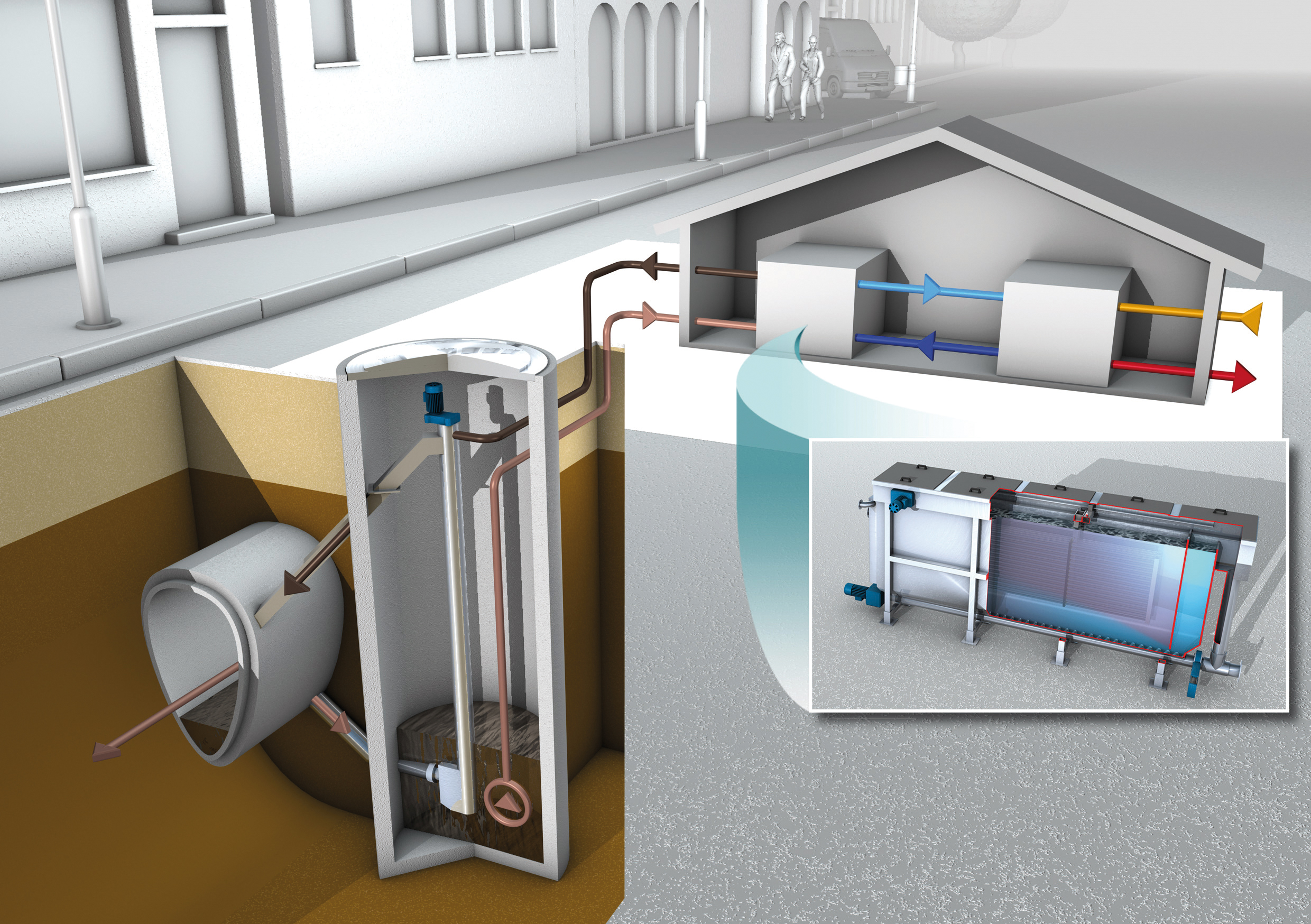Basically, a certain temperature level is necessary. Municipal wastewater typically has temperatures of 10 - 25 °C, which allow ideal operation of a wastewater heat exchanger. To avoid excessive fouling of the heat exchanger, pre-screening of coarse solids (> 6 mm) is recommended.
Wastewater is an interesting heat source
The medium from which the heat pump extracts heat can be the air, the ground, groundwater, a body of water or even wastewater.
Since the heating of buildings is particularly necessary in the colder months of the year, it is important to know the temperature of the medium from which the heat is extracted at that time. The higher the temperature, the higher the efficiency of the heat pump.
In winter, the wastewater temperature is
- at least as high as the soil temperature
- at least as high as the groundwater temperature
- higher than the temperature in bodies of water
- significantly higher than the air temperature
This makes wastewater a very interesting heat source for energy-efficient and sustainable heating
FAQ



